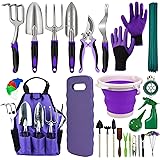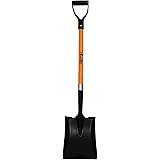Are you looking for the best rock dust for your garden soil? Basalt and Azomite is one of them, but many of us get confused in choosing one. Here we will provide you with the complete guide that helps you in identifying the best rock salt among the Basalt Vs Azomite.
Rock dust is the help mineral that provides the minerals to the soil and fulfils its deficiency. It is suitable for the ground and benefits the heavy tiled areas, compacted clay, loam soil, and backyard vineyards. It is the mined mineral that also has environmental impacts. However, it is essential for the earth or land.
Basalt and Azomite are the rock salts that come from the particular rock through mining. They are mineral enrich, and both have their specific composition and uses.
So let’s discuss them in detail.
What is basalt?
Basalt is the dark-coloured rock duct that comes from volcanic rocks. It has a fine-grained texture that mainly consists of plagioclase and pyroxene minerals. Its composition is somehow similar to the gabbro, but the only difference is that it is a fine-grained rock while gabbro has a coarse-grained texture.
Basalt is the mining basalt rock for other purposes like decorative landscaping rocks, industrial and construction use. During this process, some of the pieces are converted into fine powder. This powder is collected and then present as the rock dust for gardening.
There are many types of rock dust, but a basalt is an eco-friendly option for gardeners. Many gardens prefer to use basalt over the Azomite because it comes with a heavy metal combination that provides additional benefits to the garden plants and soil.
Moreover, basalt is mineral enrich, so it contains a sufficient amount of calcium, iron, magnesium, zinc, cobalt, aluminium, and boron.
The recommended amount of basalt for gardening
It is always best to use a sufficient amount of everything in gardening like water, rock dust, fertilizer and even light. The excess or deficiency of anything can be harmful to your garden.
So here is the best-recommended amount of basalt for gardening that ensures significant growth in your garden by enriching the soil.
- Before planting the root of plants, dress the soil top with 10 Ibs of basalt per 100 square feet of the garden. Use another 5lbs of it during the midseason.
- If you will use it for the potted plants, mix it with the potting soil as per cubic feet in the pot. Or you can use it as the soiled dressing with the 1teespoon per inch of the soil in the potted plant.
- For tress and shrubs, use 1 cup per inch of the trunk diameter and spread it all around the root area after placing or pouring the basalt rock dust water the tree carefully.
- For the lawn garden or soil, use 50 Ibs per 1000 square feet if your lawn is aerated well, then half the quantity of the basalt rock dust.
What is Azomite?
Azmoite is another rock dust that provides significant benefits to gardening. However, it comes from the rock central Utah. This rock is only mined once. Azomite is also referring phrase “A to z” of the minerals. This phase represents that it has the vast range of minerals that is required by the garden soils.
Moreover, it was formed when the volcano spread tons of ash to the nearby rocks. So it is million years old rocks that face the consequences of the volcano. The water or moisture dried out, and the ash turned into the rocks. Moreover, according to geology terms, it is referring to as the hydrated sodium calcium aluminosilicate. Azomite contains a wide range of minerals that make it superior to other rock dust. It has plenty of magnesium, silicon, calcium, potassium and hundreds of trace minerals as well.
The recommended amount of Azomite for gardening
Excess of everything is terrible. This phrase comes true in gardening s well. Plants are also living creature who breathe and live. So they also require a significant amount of everything. If you use anything in excess and think that it flourish fastly, then it is not valid.
So here is the recommended amount of the Azomite for gardening.
- Use 10lbs of Azomite for every 100 square feet of garden. Or you can measure it as the 1 lb per 25 root feet and conduct the top dressing or the watering.
- For use in a potted plant, take half a teaspoon per inch of the potted plant diameter. Mix it in the soil before planting the roots. When the plant starts growing, use one teaspoon of Azmoite after every three months.
- For the trees, use 1 to 5lbs of Azomite depends on the size of your tree.
- If you have the new lawn, use 5lbs of Azomite per square feet but use 3lbs per feet in oil or growing yards. Apply it once in the year during the spring or fall season.
Basalt Vs Azomite | The diffrences
Basalt andAzmoite is the rock dust that is the est for remineralization of the salt. But both are different have different origins.
The fundamental difference is the availability of minerals in them. Azomite has more significant minerals in it as it comes from the ash of volcanos. In comparison, the Basalt rock dust comes from mining the rocks volcanic rocks. It is the by-product of mining stones for other purposes. But it also has a significant amount of minerals essential for the remineralization of the garden soil.
The texture of both Basalt and Azomite rock dust is the same. They occur as the fine powder texture that is easy to use. However, the surface of the rock dust doesn’t matter. It requires providing some extra minerals to the soil.
So the only significant difference between both Azomite and basalt salt is the mineral composition that varies. Both of them also have different origins that cause the change in their mineral composition.
Which is best from Basalt and Azomite?
Every garden soil is different that requires the specific type of rock dust to fulfil their mineral deficiency. So it is best to perform a soil test of your garden and choose the suitable rock dust according to its mineral deficiency.
However, some studies say that basalt is an optimal kind of rock dust compared to Azomite. It has less silicon content than the Azomite but has many other minerals. It has probably 20 to 50 per cent of the silica.
Moreover, Azomite has a significant amount of silica that ranges to the 65%. So it is the considerable rock dust then the basalt.
So if your garden soil has less silica, then Azomite rock dust is best than basalt. Use the rock dust according to your soli condition.
Final thoughts
Summing up the above discussion, it is clear that the basalt Vs Azomite rock salts have significant minerals. So both of them are good for soil remineralization. Garden soil requires care and maintenance for the growth of the pants. So the rock dust is essential as the water and light for the plants. It provides significant nutrients to plants and helps them to grow effectively. Moreover, use rock dust like basalt or Azomite according to the soil condition of your garden.
We hope this discussion of Basalt and Azomit clear your thoughts and help you in maintaining the mineral requirement of your garden soil.
FAQs
Is basalt suitable for plants?
Basalt is the mineral enrich rock dust for the plants. It contains a significant amount of calcium, magnesium, manganese and many other minerals. Basalt comes from the volcanoes that help to increase the growth of plants and boost their yields. Its silicon content makes the plant pest and disease resistant.so It is suitable for the plants.
Is Azomite radioactive?
Azomite comes from the volcano ash, but it is not radioactive. It can’t emit any radiation like alpha or beta rays that can harm human and animal health. So Azomite is safe for the plants as well.
Does rock dust work?
Rock dust has a significant amount of minerals that are essential for soil remineralization. So it helps to improve the productivity and growth of the plants and crops. Many pieces of research on rock dust also prove that it is essential for improving soil quality.





